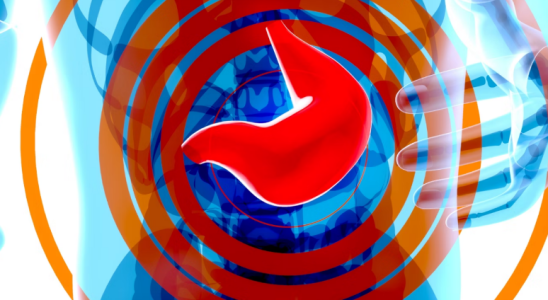Are you at risk? The “silent” liver condition that could quietly strain your heart
- Replies 1
There’s a health condition affecting tens of millions of Americans that most people have never even heard of.
It doesn’t cause pain, it doesn’t cause obvious symptoms, and you can live with it for years without realizing anything is wrong.
But research shows it could be silently damaging not just your liver, but also your heart. That’s why doctors are now sounding the alarm about Metabolic Dysfunction-Associated Steatotic Liver Disease, or MASLD.
In a long-term Duke University study, specialists tracked hundreds of patients with confirmed MASLD.
They found that many were already showing subtle signs of heart strain—breathing issues, swelling, irregular rhythms—long before an official diagnosis was made.
Over time, close to one in five eventually developed heart failure. In short: what starts in the liver can quietly push the heart toward serious trouble.
MASLD is often called a “silent” disease because it sneaks under the radar. People can carry extra fat in their liver, even some scarring, and still feel completely fine.

That means the condition can smolder for years, damaging tissues little by little. By the time fatigue, shortness of breath, or swelling show up, both the liver and heart may already be compromised.
The Duke team found that age and gender play a role—women, especially after menopause, were more likely to run into trouble, partly because they lose the protective effect of estrogen.
Other risk factors included diabetes, high blood pressure, and elevated cholesterol. In fact, the majority of the patients studied had at least one of these conditions. Put together, it creates a perfect storm that leaves both the liver and heart vulnerable.
This isn’t rare. More than a third of US adults are already living with MASLD, and projections suggest that number will keep climbing in the coming decades.
Also read: A hepatologist reveals telltale signs you urgently need a “liver detox”
If current trends hold, more than 120 million people could be affected by 2050. Considering heart failure already impacts over 6 million Americans, the overlap between these two conditions could reshape the way doctors approach preventative care.
Because MASLD itself often has no symptoms, it’s important to tune in to signs that your heart may be under pressure:
Also read: Breakthrough surgery revealed: How a pig’s liver may change the future of human transplants
One of the most striking findings was how often heart failure went unrecognized. Only a small fraction of patients had been officially diagnosed, even though many more showed clear warning signs.
Doctors behind the study are urging earlier and more targeted screening for those at risk. Catching heart failure in its early stages makes treatment far more effective.
If you have risk factors such as diabetes, high blood pressure, or being over the age of 60, it may be a good idea to ask your doctor about getting a liver screening.
For those who have already been diagnosed with fatty liver, requesting regular heart check-ups can be important, since tests like EKGs and echocardiograms may help detect potential problems at an early stage.
Read next: These common skin changes might actually point to liver trouble

Have you or someone close to you dealt with fatty liver disease or unexpected heart issues? Were the signs clear, or did they come as a surprise? Share your experiences and insights below—your story could be the reminder someone else needs to check in with their doctor.
It doesn’t cause pain, it doesn’t cause obvious symptoms, and you can live with it for years without realizing anything is wrong.
But research shows it could be silently damaging not just your liver, but also your heart. That’s why doctors are now sounding the alarm about Metabolic Dysfunction-Associated Steatotic Liver Disease, or MASLD.
In a long-term Duke University study, specialists tracked hundreds of patients with confirmed MASLD.
They found that many were already showing subtle signs of heart strain—breathing issues, swelling, irregular rhythms—long before an official diagnosis was made.
Over time, close to one in five eventually developed heart failure. In short: what starts in the liver can quietly push the heart toward serious trouble.
MASLD is often called a “silent” disease because it sneaks under the radar. People can carry extra fat in their liver, even some scarring, and still feel completely fine.

The “silent” liver condition that could quietly strain your heart. Image source: julien Tromeur / Unsplash
That means the condition can smolder for years, damaging tissues little by little. By the time fatigue, shortness of breath, or swelling show up, both the liver and heart may already be compromised.
The Duke team found that age and gender play a role—women, especially after menopause, were more likely to run into trouble, partly because they lose the protective effect of estrogen.
Other risk factors included diabetes, high blood pressure, and elevated cholesterol. In fact, the majority of the patients studied had at least one of these conditions. Put together, it creates a perfect storm that leaves both the liver and heart vulnerable.
This isn’t rare. More than a third of US adults are already living with MASLD, and projections suggest that number will keep climbing in the coming decades.
Also read: A hepatologist reveals telltale signs you urgently need a “liver detox”
If current trends hold, more than 120 million people could be affected by 2050. Considering heart failure already impacts over 6 million Americans, the overlap between these two conditions could reshape the way doctors approach preventative care.
Because MASLD itself often has no symptoms, it’s important to tune in to signs that your heart may be under pressure:
- Breathlessness during activity or when lying flat
- Swelling in ankles, feet, or legs
- Irregular or racing heartbeat
- Fatigue that doesn’t improve with rest
- Feeling dizzy or lightheaded
Also read: Breakthrough surgery revealed: How a pig’s liver may change the future of human transplants
One of the most striking findings was how often heart failure went unrecognized. Only a small fraction of patients had been officially diagnosed, even though many more showed clear warning signs.
Doctors behind the study are urging earlier and more targeted screening for those at risk. Catching heart failure in its early stages makes treatment far more effective.
If you have risk factors such as diabetes, high blood pressure, or being over the age of 60, it may be a good idea to ask your doctor about getting a liver screening.
For those who have already been diagnosed with fatty liver, requesting regular heart check-ups can be important, since tests like EKGs and echocardiograms may help detect potential problems at an early stage.
Read next: These common skin changes might actually point to liver trouble
Key Takeaways
- MASLD (previously NAFLD) is a common, often silent liver disease now linked with increased risk of heart failure.
- Duke University researchers followed patients for more than a decade and found nearly half showed early markers of heart strain.
- Risk was especially high among older adults, women after menopause, and people with diabetes, high blood pressure, or high cholesterol.
- Doctors urge more proactive screening and lifestyle changes to protect both the liver and the heart.






